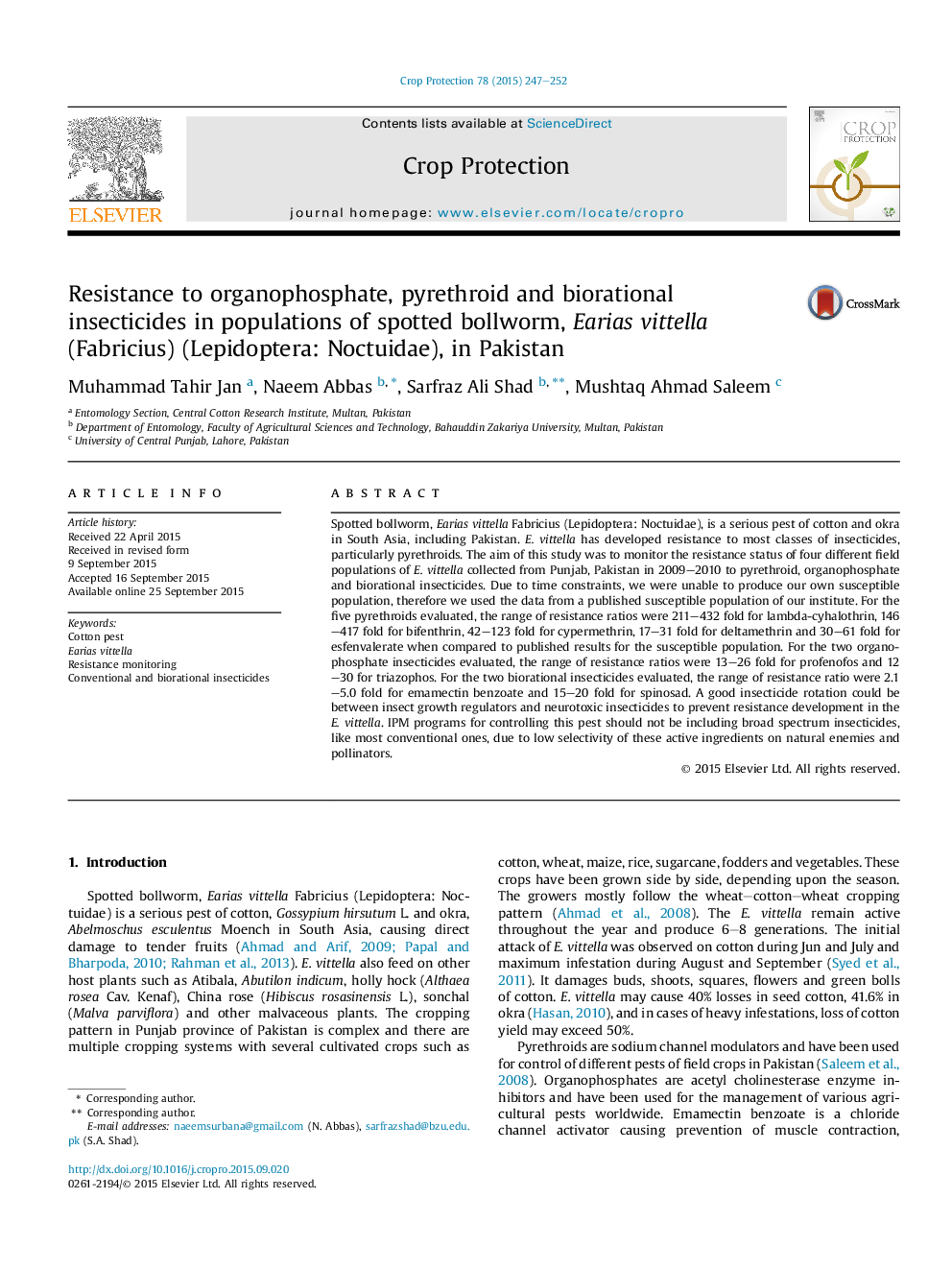| کد مقاله | کد نشریه | سال انتشار | مقاله انگلیسی | نسخه تمام متن |
|---|---|---|---|---|
| 4505694 | 1624309 | 2015 | 6 صفحه PDF | دانلود رایگان |

• Earias vittella populations showed low to very high resistance levels (17–417-fold) to pyrethroids.
• Low to moderate resistance levels (12–30-fold) were observed to organophosphates.
• Very low to low resistance levels (2.1–20-fold) were observed to novel chemistries.
• Effective resistance management strategies are required to prevent resistance development and field control failures.
Spotted bollworm, Earias vittella Fabricius (Lepidoptera: Noctuidae), is a serious pest of cotton and okra in South Asia, including Pakistan. E. vittella has developed resistance to most classes of insecticides, particularly pyrethroids. The aim of this study was to monitor the resistance status of four different field populations of E. vittella collected from Punjab, Pakistan in 2009–2010 to pyrethroid, organophosphate and biorational insecticides. Due to time constraints, we were unable to produce our own susceptible population, therefore we used the data from a published susceptible population of our institute. For the five pyrethroids evaluated, the range of resistance ratios were 211–432 fold for lambda-cyhalothrin, 146–417 fold for bifenthrin, 42–123 fold for cypermethrin, 17–31 fold for deltamethrin and 30–61 fold for esfenvalerate when compared to published results for the susceptible population. For the two organophosphate insecticides evaluated, the range of resistance ratios were 13–26 fold for profenofos and 12–30 for triazophos. For the two biorational insecticides evaluated, the range of resistance ratio were 2.1–5.0 fold for emamectin benzoate and 15–20 fold for spinosad. A good insecticide rotation could be between insect growth regulators and neurotoxic insecticides to prevent resistance development in the E. vittella. IPM programs for controlling this pest should not be including broad spectrum insecticides, like most conventional ones, due to low selectivity of these active ingredients on natural enemies and pollinators.
Figure optionsDownload as PowerPoint slide
Journal: Crop Protection - Volume 78, December 2015, Pages 247–252